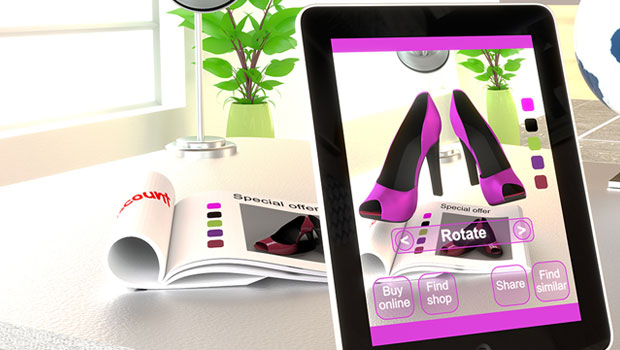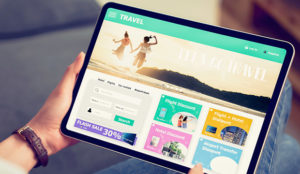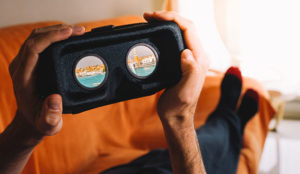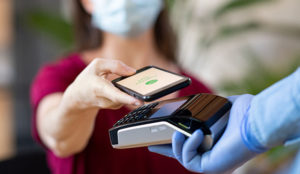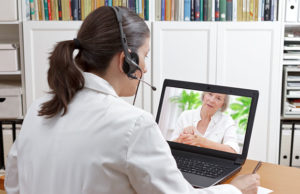The pandemic has exposed one fundamental, seemingly contradictory reality: people like to shop online, but they also crave in-person experiences.
This era has also made clear that there’s an answer to this conundrum: to provide shopping experiences that combine both physical and digital elements. Also known as “phygital” experiences, these strive to give customers the best of both the online and in-person worlds.
“E-commerce is brilliant; however, it fragments the user journey and the understanding of the customer for retailers,” Sergio Iacobucci, product marketing director for Qubit, explained to the E-Commerce Times. “A ‘phygital’ experience aims to bring those two worlds together. Providing a connected and coherent cross-channel experience is what’s expected from customers today, and if you meet those expectations, they will reward you with their loyalty.”
Consumers, in other words, want a blend of experiences across channels.
“Retailers need to build personalized experiences across all channels in order to adapt to changing consumer preferences, and combining the physical and digital realms is a great way to do that,” Christian Selchau-Hansen, co-founder and CEO of Formation, told the E-Commerce Times.
“A fully omnichannel experience satisfies and excites customers when executed correctly, while retailers benefit from customer willingness to keep coming back,” he added.
It’s not that phygital experiences are new, exactly, but rather that they are becoming increasingly important in attracting, engaging, and retaining clientele.
“Customers were already traversing digital and physical shopping channels, and the global pandemic has only accelerated this shift,” Klaudia Karcz, customer success manager for Dynamic Yield, explained to the E-Commerce Times. “Retailers have had to adapt how they run their shops, creating more immersive in-store experiences focused on safety and a personalized, premium service for those who enter the store.”
Phygital Successes
Phygital experiences that are well-designed and blended into customers’ actual lives and needs are the ones that are most likely to be successful.
“The best experiences are those that are quick, seamless, and blend right into your daily life,” Steven Boal, CEO and founder of Quotient, told the E-Commerce Times.
“Think about how normal it feels to pull out a smartphone and send a text, read an email, or access an app. That’s all digital, but that digital world blends into the physical realm when using a phone to scan a receipt, place an order for collection, or pay for something in-store. The action is quick, easy, and is something that most consumers are familiar with. The digital component is a natural extension of the physical experience,” he explained.
This kind of blending can take the form, for instance, of offering digital coupons for online or in-person grocery shopping.
“We are quite proud to have secured our first pure-play grocery e-commerce delivery partnership with Shipt,” said Boal. “Through this partnership, Quotient delivers digital coupons to Shipt’s network of more than 90 retailers — allowing customers to save money on their favorite brands without having to leave the house.
“Customers can discover coupons as they browse the items they need. Coupons also appear for applicable items on product pages. Shoppers can select their desired coupons without further action — they are redeemed automatically when items are purchased and delivered by a Shipt shopper. We see this feature as especially important in the current climate, in which many consumers have searched for alternatives to traditional in-person grocery shopping.”
Holographic Experiences
The blending can also take the form of augmented reality (AR) experiences that give customers a way to experience a product in the comfort of their own homes before making a purchase.
“Augmented reality is the perfect solution for merging physical and digital worlds together,” Patrick Johnson, CEO and co-founder of Rock Paper Reality, told the E-Commerce Times. “For example, the online product visualization work we’re doing, particularly in home goods, helps customers view products in their home before they buy them.”
Johnson continued, “Unsure how that couch is going to fit in your living room? Drop in a 1-to-1 scale, 3D model of it in your home and see for yourself before you checkout. Does the color of the couch match your carpet and paint? AR allows you to visualize how it will look before it’s actually there, making it feel tangible and real. You can also configure it in real-time to change the color, materials, and size.”
Winemaker Siduri has been offering this kind of augmented reality experience of their products by giving consumers a holographic glimpse into their wines and their philosophy.
“The wine industry can be somewhat traditional, so our goal was to embrace this new technology and create an experience where consumers — and the next generation of wine drinkers — can engage with Siduri in a completely new way,” Adam Lee, founder of Siduri, explained to the E-Commerce Times.
“Offering a ‘phygital’ [encounter] like the Siduri Holographic Experience allows consumers to engage and form a deeper connection to Siduri while highlighting the core tenets of the winery in three interesting and interactive stories: Pinot Noir’s expression of the site; Siduri’s use of, and longtime advocation for, screw caps; and Siduri’s over 500 90-plus point scores.”
The Future of Phygital
Though the pandemic has turned a spotlight on phygital experiences, this innovative approach to marketing and sales will likely stick around even after the pandemic is over. Consumers have grown used to both shopping online and seeing the creative ways that e-commerce can be blended into the physical world, and businesses are discovering the many benefits of offering such experiences to their customers.
“Phygital offerings will become like oxygen for retail brands; they cannot survive without it,” Myles Kleeger, president and chief customer officer for Braze, explained to the E-Commerce Times.
“Consumers will increasingly demand frictionless online and offline experiences, accurate inventory data, and the option for quick delivery or curbside pickup. Looking forward, smart retailers will transform their spaces to create new experiences,” he noted.
The key will be making sure that the connections drawn between the physical and digital worlds make sense and are seamless for consumers.
“Humans still desire human interaction, but that interaction cannot come at the expense of convenience,” said Kleeger. “What else can retailers do to enhance the experience in-store with technology? How can they better recognize their customers when they walk in the door and even anticipate their needs?
“As a retailer, the pressure has never been greater to figure out what your unique value proposition is, and innovative phygital offerings that take advantage of mobile capabilities may be the key to building customer loyalty and long-term survival.”
Physical and digital experiences must, ultimately, inform each other.
“Your digital experience needs to be an extension of your physical experience,” Leena Iyar, chief brand officer for Moxtra, told the E-Commerce Times. “It needs to hold true to the brand identity and persona you’ve built into the projected physical experience.”
Moxtra’s products include a mobile-oriented collaboration and communication platform that can be integrated with external services.
“Digital is important now and will continue to be extremely important in the future. It’s powerful to deliver that virtual experience right in your customer’s pocket, available at the time they want and the way they want it,” Iyar remarked.

